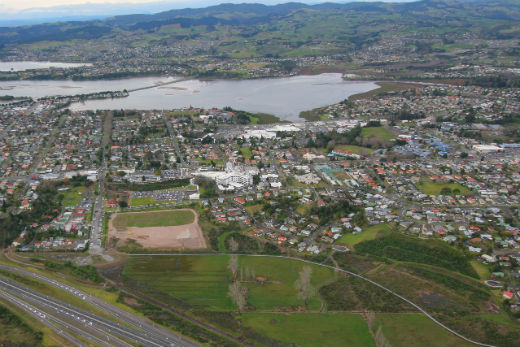An annual report detailing how Tauranga's growth is pushing past forecasts has been adopted by the Tauranga City Council.
New housing consents issued during the 2015/16 financial year were 86 per cent above the 10 year average.
The annual report reflects city growth.
This report informs the community how the council performed against what was set through the Long Term Plan, the key decisions were made and how council performed financially, says a statement from the Tauranga City Council.
Council brought forward capital projects to have enough development-ready land available to meet demand in the urban growth areas of The Lakes, Tauriko and Wairakei.
This included providing core network infrastructure; transportation, water, wastewater and stormwater, and reserves.
The majority of Council's $83 million capital works programme was spent on the city's core network infrastructure, which accounted for 70 per cent of capital expenditure this year.
Large projects delivered or progressed during the year from July 1 2015, to June 30 2016 include Te Okuroa Drive and the Mangatawa Interchange, investment in our car parking buildings including a an additional floor on Elizabeth Street, upgrading Council's ICT systems, the Southern Pipeline wastewater main, a variety of stormwater management projects, and completing the Greerton Library.
This year also saw Council agree to invest in the Tauranga Waterfront, the airport, and to look into options for civic amenities in the city centre.
Throughout the year Council responded as required to ensure the organisation continues to successfully manage Tauranga's growth, while continuing to provide efficient services to the community and invest in the future of the city.
Council continued in parallel to provide the day-to-day services that the community relies upon.
The surge in development activity created more demand for Council services such as building, engineering, planning and information services, upping both revenue and delivery costs. Other services such as waste disposal and animal services were also in high demand from the city's growing population. In general, across Council's activities, additional costs were offset by increased revenue.
Council debt levels at the end of the financial sat at $297 million, below the $355 million budgeted through the Long Term Plan. The debt-to-revenue ratio is also down to 155 per cent.
The lower debt is a consequence of delaying payment on several large capital projects, including the Marine Precinct and the Southern Pipeline, which will be continuing into next year. Higher than expected revenue from development contributions and land sales also contributed to reducing debt. An ambitious capital works programme for the coming 2016/17 financial year will see debt return to budgeted levels next year.
The Annual Report is available on Council's website and printed copies will be available for viewing in libraries and at the Customer Service Centre from next week.



0 comments
Leave a Comment
You must be logged in to make a comment.